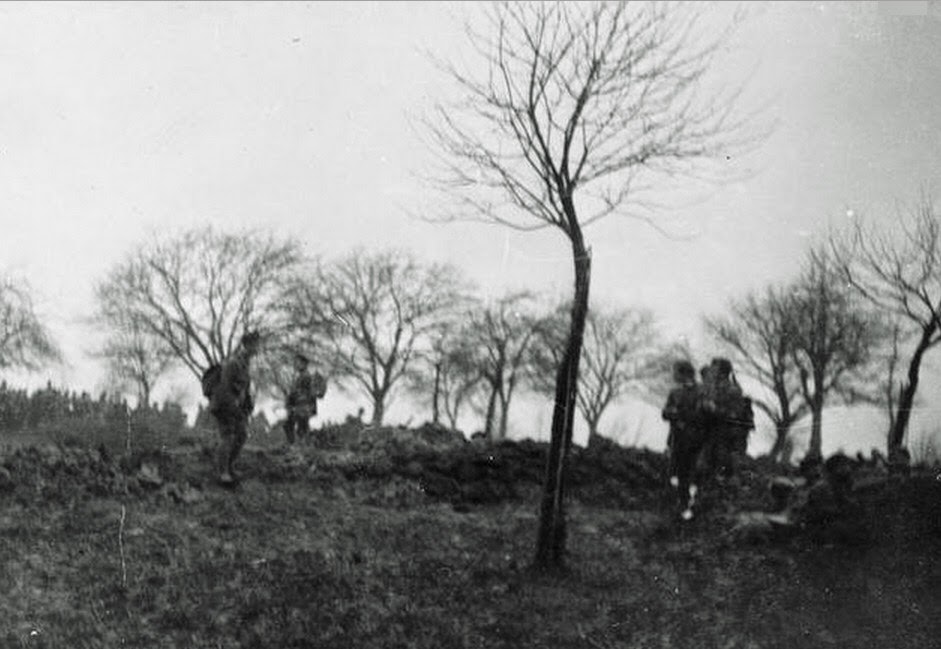 |
| British Troops Advancing to the Front Near Neuve-Chapelle |
Quick Facts
Where: North of Paris in the Pas-de-Calais, 21 miles north of Arras, about 130 miles from Paris
Allied Units Participating: British First Army, Including Canadian and Indian Army Formations (four divisions) Supported by Second Army Units
Allied Commanders: General Sir Douglas Haig (First Army), General Horace Smith-Dorrien (Second Army)
Opposing Forces: German Sixth Army (two divisions+)
German Commander: Crown Prince Rupprecht
Casualties: 13,000 British and 12,000 German, Killed, Wounded, and Captured
 |
Royal Scots Fusiliers Advancing After Artillery Barrage |
- First attack on trenches mounted from a trench-line in the Great War and included some successes: tactical surprise, cutting of barbed wire barricades, and penetration of multiple lines of trenches.
- First action (in a diversionary role) of Canadian forces on the Western Front.
- Early case study of the difficulties of breaking through well-defended trenches, including congestion behind the front, coordinating artillery with the infantry advance, bringing up reinforcements, and preparing for counterattacks.
- The battle of Neuve-Chapelle was the first indication of the shell shortage that would plague the British Army throughout 1915, which would eventually be corrected under the leadership of David Lloyd George and boost his political ascendancy.
- In after-action analysis the British Army concluded that advancing troops needed a light machine gun, and the Lewis gun eventually proved to be the solution for this purpose.
- General Haig afterward would persist in his hope of using cavalry to exploit breakthroughs.
 |
| Two British Gunners Killed in the Battle Near Their Gun |
Overall:
Neuve-Chapelle was an important part of the learning curve for the British Army, which was undergoing tremendous expansion in 1915. The casualty figures show the incredible price that would be paid throughout the war for such learning experience by all the combatants.
Sources: Imperial War Museum, Canadian Forces Website


I appreciate the info under "Overall"
ReplyDeleteQ: exactly how many were actually killed or injured during this engagement both sides? (not "official counts", but best known headcounts as of today, 2015)
Many of the men listed as missing were probably killed in action. Also a number of the wounded also died of their wounds and would not be listed as killed unless they died in the Casualty Clearing Stations behind the lines or in the regimental aid posts. Official counts are those immediately taken after the battle. I do not believe a study has ever been done on the exact versus the official count of casualties has been done.
ReplyDeleteThe British gun depicted above looks really old!
ReplyDeleteJames, that was my impression as well. There is certainly something odd about the gun. Could it be that the barrel assembly has been rolled onto its side by an explosion nearby?
ReplyDelete
ReplyDeleteThank you for your interesting and informative blog. I have enjoyed reading it and appreciate the work you have put into it. Here is some relevant information for you to review .
army vest sets